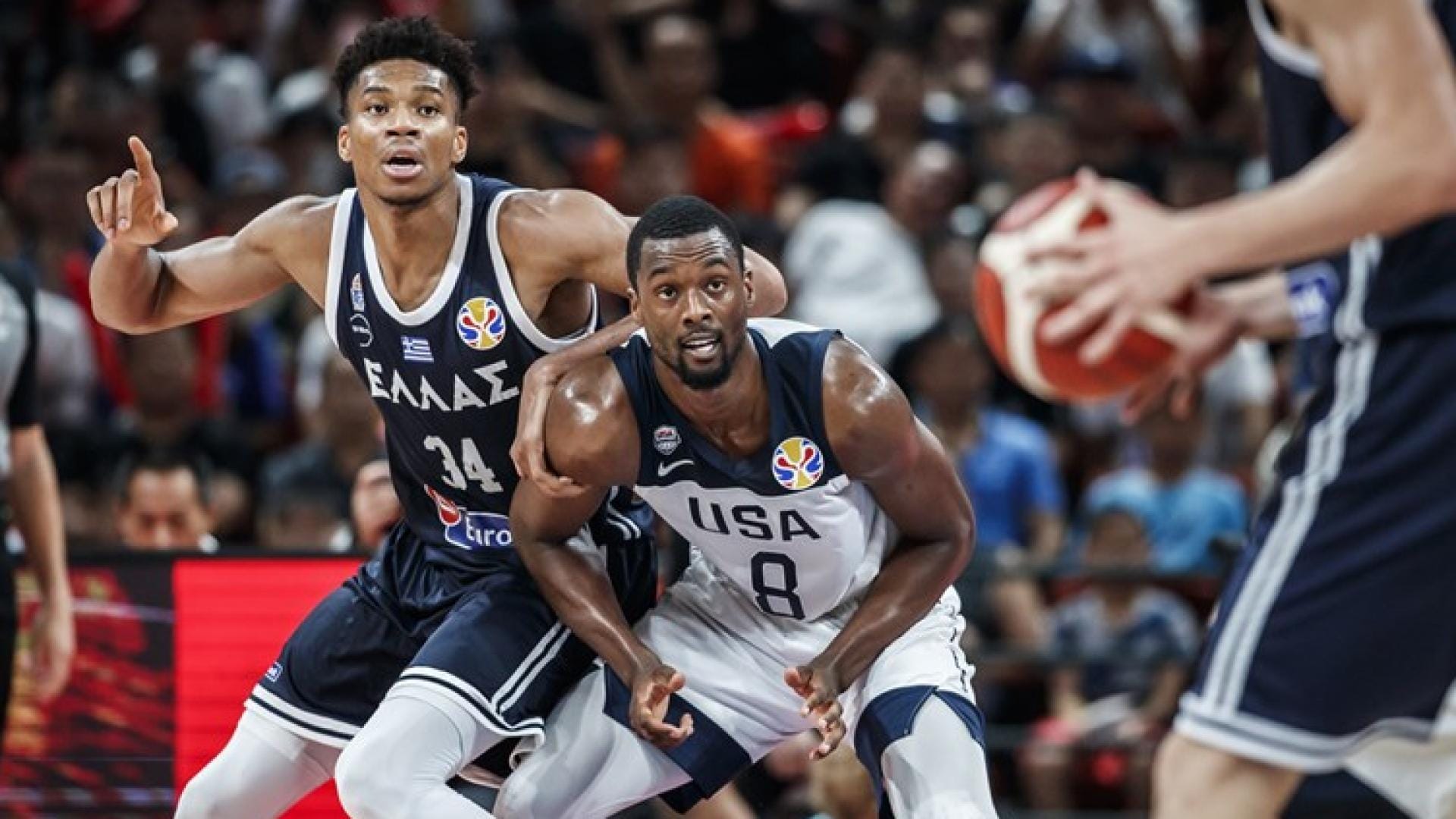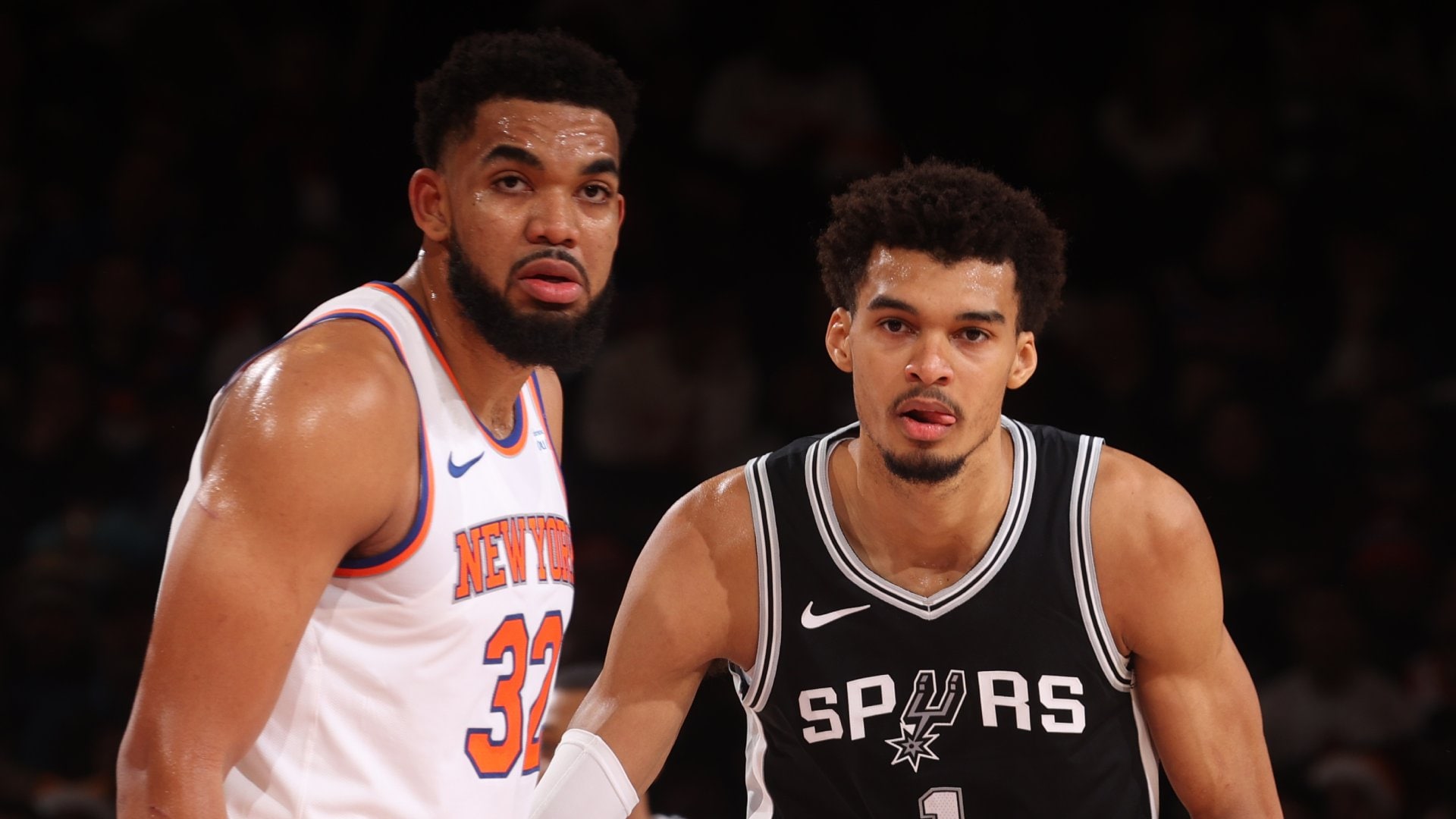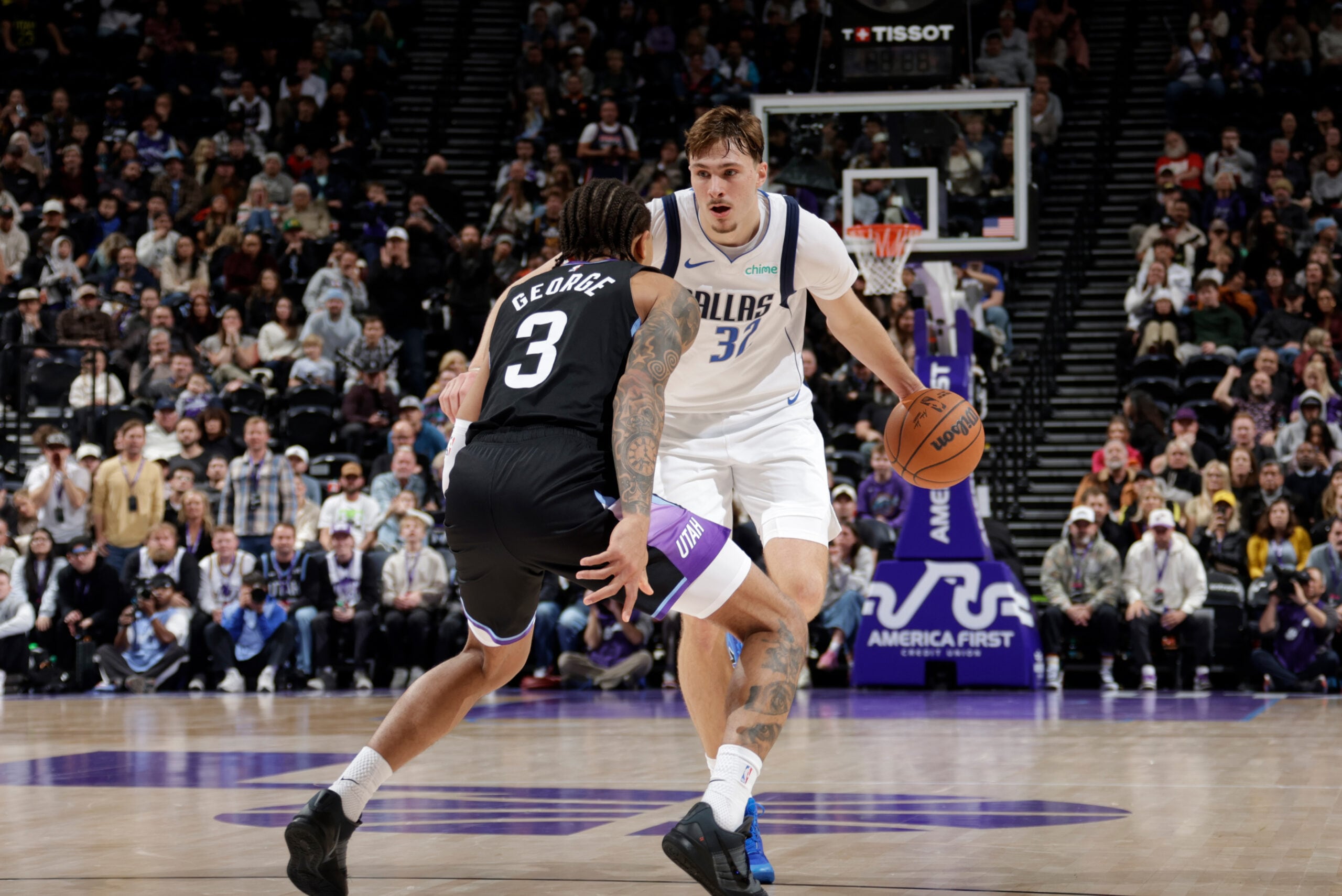
The biggest challenge, at least internally, for the United States Men’s National Team as it begins play at the FIBA World Cup will be chemistry. Exhibit A: 19 turnovers in the team’s 84-68 exhibition win over Canada on Monday.
When it opens the World Cup with a game against the Czech Republic on Sunday, the U.S. will have had just 15 practices and five exhibition games to prepare. And the final, 12-man roster has only been together and healthy for two of those games.
With a roster that’s light on stars yet heavy on good players from good teams, it takes time to figure out a rotation. Five games might not be enough, and it’s clear that the entire exhibition slate has been an experiment in regard to lineups.
Head coach Gregg Popovich used five different starting lineups in the five games, with 10 different players starting at least one game. With different starting lineups, there were different second units each night.
As a result, only two five-man units played at least 10 minutes over the five games, and only five lineups played in more than one game together. In the exhibition finale (against Canada on Monday), the U.S. didn’t use a single lineup that had played in any of the four previous games.
So there’s not much to be gleaned from the numbers for any five-man unit. It’s all small sample sizes.
Of course, small sample sizes are all you get with the national team. The U.S. will play just five more games before they reach the elimination rounds of the World Cup. And at that point, one bad stretch could end the United States’ run atop the basketball world. The Americans have won five straight major tournaments, but a third straight World Championship may be the toughest task of that run. The loss to Australia didn’t count, but was the first defeat for an American team comprised of all NBA players since the semifinals of the 2006 World Championship.
While there’s not much to be learned from the 103 different lineups that the Senior Team used over the five exhibition games (including one against the U.S. Select Team), the overall data could tell us a few things …
One ball-handler or two?
Donovan Mitchell and Kemba Walker were the U.S. Team’s second most-used two-man combination in the exhibition games, having played a little more than 69 minutes together. But De’Aaron Fox’s decision (prior to the team’s departure for Australia) to withdraw has left the U.S. with just three primary ball-handlers, and the third of those — Derrick White — has been the 11th man in the rotation.
The win over Canada featured Popovich’s tightest rotation. The five starters were back on the floor just a minute and a half into the second quarter, White didn’t play until late in the first half, and Brook Lopez didn’t play until midway through the third quarter.
But with Mitchell and Walker starting together, there were still some minutes with neither of them (nor White) on the floor. The second-unit backcourt was Marcus Smart and Joe Harris, neither of whom has nearly the same ability to break down a defense as Mitchell or Walker.
And with Smart on the floor without Mitchell, Walker or White (over the last two exhibition games), the U.S. scored just 13 points on 18 possessions. The first 2:47 of the second quarter of the U.S. Team’s loss to Australia on Saturday was particularly ugly. The Americans scored just two points on five possessions, with those two points coming when Australia fouled Smart on a late-clock, off-balance 3-pointer.
That’s a small sample size and the Smart-led offense could certainly improve going forward, but the U.S. might be better off staggering the minutes of Mitchell and Walker so that one of the two is on the floor at all times. The offense has actually been more efficient with only one *ball-handler on the floor than it has been with two.
* Counting Fox, Mitchell, Walker and White as ball-handlers.
| On floor | MIN | PTS | Opp | OffRtg | DefRtg | NetRtg | +/- |
|---|---|---|---|---|---|---|---|
| 3 of 4 (DM, KW & DW) | 2.4 | 3 | 6 | -3 | |||
| Mitchell & Walker | 66.7 | 152 | 128 | 108.6 | 90.1 | +18.4 | +24 |
| Walker & White | 7.8 | 20 | 19 | 117.6 | 111.8 | +5.9 | +1 |
| Mitchell & White | 5.4 | 11 | 22 | 84.6 | 200.0 | -115.4 | -11 |
| Fox & Mitchell | 1.3 | 3 | 2 | +1 | |||
| 2 of 4 TOTAL | 81.2 | 186 | 171 | 108.1 | 98.8 | +9.3 | +15 |
| Walker only | 35.7 | 85 | 77 | 113.3 | 101.3 | +12.0 | +8 |
| Mitchell only | 34.2 | 86 | 63 | 114.7 | 87.5 | +27.2 | +23 |
| White only* | 16.8 | 43 | 27 | 130.3 | 79.4 | +50.9 | +16 |
| Fox only | 20.2 | 51 | 48 | 118.6 | 106.7 | +11.9 | +3 |
| 1 of 4 TOTAL | 106.9 | 265 | 215 | 117.3 | 94.7 | +22.5 | +50 |
| OffRtg = Points scored per 100 possessions
DefRtg = Points allowed per 100 possessions NetRtg = Point differential per 100 possessions * Does not include minutes w/ Select Team |
|||||||
Turner coming up big
If Kyle Kuzma didn’t suffer an ankle injury before the loss to Australia, it would have been interesting to see if Popovich and USA Basketball managing director Jerry Colangelo kept all three centers on the roster.
Either way, Myles Turner has clearly established himself as the starting center. Turner not only shot 71 percent over the five exhibition games, he grabbed a team-best 12.7 rebounds per 30 minutes, and led the team in both total plus-minus (plus-48) and on-court NetRtg, with the U.S. outscoring its opponents by 27.4 points per 100 possessions in his 83 minutes on the floor.
| Player | MIN | Pace | OffRtg | DefRtg | NetRtg | +/- |
|---|---|---|---|---|---|---|
| Barnes | 89.4 | 83.0 | 110.3 | 93.5 | +16.7 | +30 |
| Brown | 76.6 | 85.2 | 118.5 | 93.9 | +24.6 | +38 |
| Harris | 95.2 | 84.6 | 110.0 | 94.1 | +15.9 | +31 |
| Lopez | 36.7 | 88.4 | 88.9 | 108.6 | -19.8 | -16 |
| Middleton | 85.4 | 85.9 | 104.9 | 102.7 | +2.1 | +7 |
| Mitchell | 110.0 | 84.9 | 108.5 | 95.3 | +13.3 | +34 |
| Plumlee | 49.1 | 84.7 | 121.8 | 103.7 | +18.0 | +12 |
| Smart | 26.5 | 80.1 | 113.2 | 94.3 | +18.9 | +10 |
| Tatum | 104.7 | 84.2 | 107.8 | 98.2 | +9.6 | +18 |
| Turner | 82.7 | 81.3 | 116.0 | 88.6 | +27.4 | +48 |
| Walker | 112.6 | 84.6 | 109.7 | 96.2 | +13.5 | +30 |
| White* | 32.4 | 82.7 | 113.2 | 112.1 | +1.1 | +3 |
| TOTAL | 200 | 84.6 | 110.7 | 96.9 | +13.7 | +56 |
| Pace = Possessions per 40 minutes w/ player on floor
OffRtg = Points scored per 100 possessions w/ player on floor DefRtg = Points allowed per 100 possessions w/ player on floor NetRtg = Point differential per 100 possessions w/ player on floor * Does not include minutes w/ Select Team |
||||||
Mason Plumlee has also been an integral part of the rotation. Though Plumlee took just four shots (and two free throws) in 49 total minutes over the five exhibition games, the U.S. scored 122 points per 100 possessions with him on the floor. That was the best on-court OffRtg mark among the players on the final roster.
With Turner and Plumlee getting the bulk of the playing time at center, Brook Lopez has played just 17 minutes over the last three games. He averaged 7.9 3-point attempts per 36 minutes with the Bucks last season, but attempted just four 3s in 37 total minutes, and he was the only player on the final roster that had a negative plus-minus (minus-16) over the exhibition slate.
Cumulative exhibition stats for the 12 guys remaining on the USA roster. pic.twitter.com/lPOHxjLecO
— John Schuhmann (@johnschuhmann) August 26, 2019
The U.S. has also played a little less than 21 minutes with none of the three centers on the floor. In fact, Popovich went small for most of the fourth quarter of his team’s loss to Australia on Saturday. The small-ball defense allowed 13 points on 11 possessions down the stretch in the loss, but has been strong otherwise. Take away that fourth quarter on Saturday and small-ball lineups allowed just 28 points in 34 possessions.
Small ball, small sample.
Combo-forward combos
While Walker, Mitchell and Turner appear to be sure things to start, the starting forward spots could still be wide open. The U.S. started four different combinations at the three and four in the five exhibition games, with Harrison Barnes and Khris Middleton being the only pair of forwards that started more than one game together.
Jaylen Brown and Jayson Tatum didn’t start any games together, but played more minutes together (40) than any pair of forwards. And, within the group of four forwards, that was Tatum’s most successful pairing. The U.S. outscored its opponents by 20 points per 100 possessions with the two young Celtics on the floor together, but was outscored by 16 per 100 in 49 total minutes with Tatum on the floor with either Barnes or Middleton.
Joe Harris also got one start at the three and played 22 minutes total alongside both Walker and Mitchell. Harris was only able to get 10 3-pointers up in his 95 minutes (six of his teammates attempted more 3s per minute), but he rebounded well for his position and the U.S. allowed less than 95 points per 100 possessions with him on the floor.
Without great chemistry or the one-on-one stars that can get buckets by themselves, defense is more important than its ever been. While there were some ugly offensive stretches in the loss to Australia, it was on defense where the numbers were far worse than they were in their four exhibition wins.
| Game | Opponent | PTS | Opp | Off poss | Def poss | OffRtg | DefRtg | NetRtg |
|---|---|---|---|---|---|---|---|---|
| 1 | Select | 97 | 78 | 90 | 91 | 107.8 | 85.7 | +22.1 |
| 2 | Spain | 90 | 81 | 79 | 80 | 113.9 | 101.3 | +12.7 |
| 3 | Australia | 102 | 86 | 86 | 87 | 118.6 | 98.9 | +19.8 |
| 4 | Australia | 94 | 98 | 84 | 84 | 111.9 | 116.7 | -4.8 |
| 5 | Canada | 84 | 68 | 83 | 82 | 101.2 | 82.9 | +18.3 |
| TOTAL | 467 | 411 | 422 | 424 | 110.7 | 96.9 | +13.7 | |
| OffRtg = Points scored per 100 possessions
DefRtg = Points allowed per 100 possessions NetRtg = Point differential per 100 possessions |
||||||||
* * *
John Schuhmann is a staff writer for NBA.com. You can e-mail him here, find his archive here and follow him on Twitter.
The views on this page do not necessarily reflect the views of the NBA, its clubs or Turner Broadcasting.










